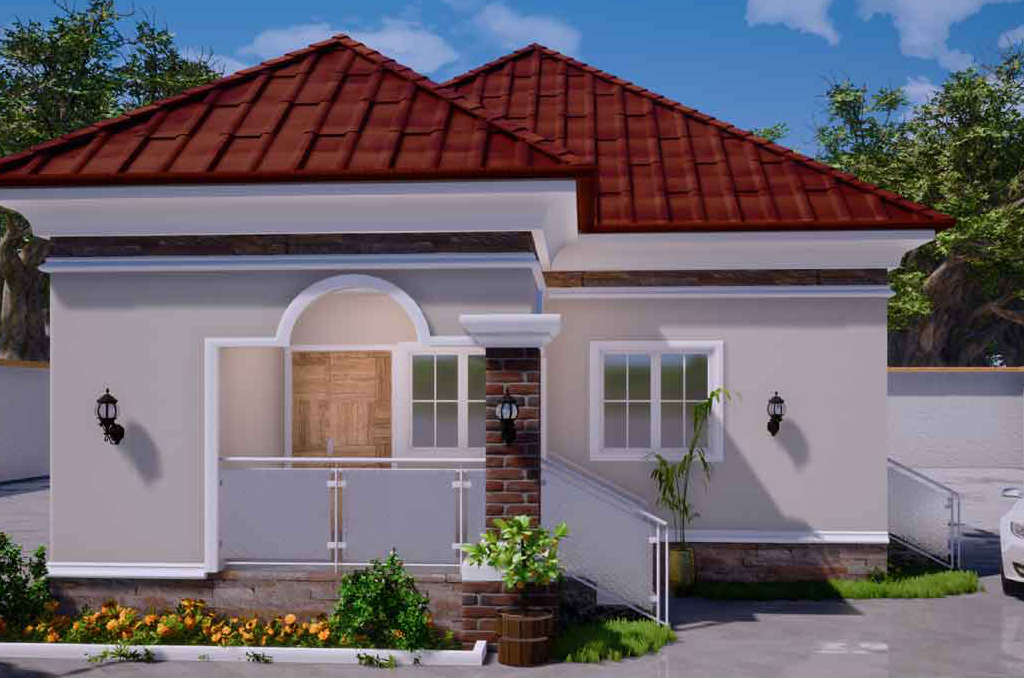Costs of Building a 3-Bedroom Block House

Exploring the Basic Costs of Building a 3-Bedroom Block House
Building a house is a significant undertaking, involving careful planning and a clear understanding of the associated costs. Among the various types of construction, block houses are a popular choice due to their durability, energy efficiency, and aesthetic appeal. If you’re considering building a 3-bedroom block house, it’s essential to have a grasp of the basic costs involved in the process.
 Factors Affecting the Cost
Factors Affecting the Cost
The cost of building a 3-bedroom block house can vary widely based on several factors, including location, size, design complexity, quality of materials, labor costs, and market conditions. To get a rough estimate, it’s helpful to break down these factors:
Location: The geographical location plays a significant role in determining the cost. Urban areas generally have higher land and labor costs compared to rural regions.
Size and Layout: The size and layout of the house are critical cost determinants. A larger house will generally require more materials and labor, thus increasing the overall cost.
Design Complexity: Intricate architectural designs and unconventional layouts can drive up costs due to increased labor and specialized construction techniques.
Materials: The quality of materials used, such as the type of blocks, roofing materials, flooring, windows, and doors, will impact the cost. Higher-quality materials may have a greater upfront cost but can lead to long-term savings in maintenance and energy efficiency.
Labor Costs: Labor is a significant expense in construction. Skilled labor costs can vary based on location and demand for certain trades.
Permits and Regulations: Obtaining the necessary permits and adhering to building codes and regulations can also contribute to costs.
Breakdown of Basic Costs of Building a 3-Bedroom Block House
For a rough estimate of the basic costs involved in building a 3-bedroom block house, let’s consider an example in a mid-range cost environment:
Land Cost: The cost of the land can vary widely based on location. As an approximate figure, land costs could range from 20% to 40% of the total budget.
Construction Costs: The construction costs, including materials and labor, typically constitute the bulk of the budget. On average, construction costs can range from 50% to 70% of the total budget. This includes expenses like foundation, walls, roof, windows, doors, flooring, plumbing, electrical work, and finishes.
Design and Architectural Fees: If you’re working with an architect to create a custom design, their fees could be around 5% to 10% of the total project cost. if you wish to purchase an already-made house plan design, you can get it at a reasonable cost of less than 5% of the project cost.
Permits and Regulatory Fees: Permit costs and fees to comply with building codes and regulations can range from 1% to 3% of the total budget.
Contingency: It’s wise to set aside a contingency fund of about 5% to 10% of the total budget to account for unexpected expenses or changes during construction.
 Different stages of block construction and typical costs associated with each stage:
Different stages of block construction and typical costs associated with each stage:
1. Site Preparation:
Costs:
Site Clearing: Removing vegetation, debris, and any existing structures can cost around $1,000 to $5,000, depending on the size and complexity of the site.
Excavation and Grading: Excavating the land to create a level foundation can range from $3,000 to $10,000, depending on soil conditions.
2. Foundation:
Costs:
Concrete Foundation: Building the concrete foundation, which includes footings and foundation walls, can cost around $10,000 to $30,000, depending on the size and depth of the foundation.
3. Framing:
Costs:
Structural Materials: This includes the cost of the blocks or bricks, mortar, and reinforcement materials. The cost can vary significantly based on the quality of the blocks and the size of the house. As a rough estimate, this stage can cost between $15,000 to $30,000.
4. Roofing:
Costs:
Roof Trusses or Rafters: The cost of roof framing materials can range from $5,000 to $15,000, depending on the complexity of the roof design and the size of the house.
Roofing Materials: Roofing materials such as shingles, tiles, or metal roofing can cost anywhere from $5,000 to $15,000, depending on the chosen material and roof size.
5. Exterior Finishes:
Costs:
Exterior Walls: Depending on the type of finish you choose (e.g., stucco, siding), costs can range from $5,000 to $15,000 or more.
Windows and Doors: The cost of windows and doors for a 3-bedroom house can range from $5,000 to $15,000, depending on the quality and number of units.
6. Interior Work:
Costs:
Plumbing: The cost of plumbing, including pipes, fixtures, and installation, can range from $5,000 to $15,000 or more, depending on the complexity of the plumbing layout.
Electrical Work: Electrical installation, including wiring, outlets, switches, and fixtures, can cost around $5,000 to $15,000, depending on the size of the house and electrical needs.
HVAC (Heating, Ventilation, and Air Conditioning): HVAC installation costs can vary widely based on the system’s complexity and the size of the house. Budget around $5,000 to $15,000.
7. Interior Finishes:
Costs:
Insulation: Insulating walls, floors, and the attic can cost around $2,000 to $5,000, depending on the type of insulation used and the size of the house.
Drywall and Painting: The cost of drywall installation and painting can range from $5,000 to $15,000, depending on the number of rooms and the quality of finishes.
Flooring: The cost of flooring materials and installation can vary greatly based on the chosen flooring type, ranging from $5,000 to $15,000 or more.
8. Final Touches:
Costs:
Cabinets and Countertops: Installing kitchen and bathroom cabinets, along with countertops, can cost around $5,000 to $15,000, depending on the quality and size of the space.
Fixtures and Trim: Installing light fixtures, faucets, and other finishing touches can range from $2,000 to $5,000 or more.
9. Exterior Landscaping:
Costs:
Landscaping and Outdoor Features: Creating the outdoor landscape, including lawns, plants, pathways, and possibly features like a patio or deck, can range from $5,000 to $15,000 or more.
10. Miscellaneous Costs:
Costs:
Permits and Fees: Depending on local regulations, permit costs, and fees can range from a few hundred dollars to a couple of thousand dollars.
Contingency: It’s wise to set aside a contingency fund of around 5% to 10% of the total construction budget to cover unforeseen expenses.
 Basic tips to help you save costs without compromising the quality and integrity of your 3-bedroom block house:
Basic tips to help you save costs without compromising the quality and integrity of your 3-bedroom block house:
1. Plan Carefully: Thoroughly plan every aspect of your project before construction begins. A well-thought-out plan reduces the chances of costly changes and delays during construction.
2. Choose an Efficient Design: Opt for a simple and efficient house design that minimizes complicated angles, corners, and rooflines. Complex designs often require more materials and labor, driving up costs.
3. Energy Efficiency: Incorporate energy-efficient features like proper insulation, energy-efficient windows, and efficient HVAC systems. While there may be upfront costs, these features can lead to long-term savings on energy bills.
4. Value Engineering: Collaborate with architects, engineers, and contractors to identify cost-effective alternatives for materials and construction methods without sacrificing quality.
5. Bulk Material Purchases: Buy construction materials in bulk when possible. This can lead to discounts and cost savings compared to purchasing materials piecemeal.
6. Competitive Bidding: Solicit bids from multiple contractors and suppliers to ensure you’re getting competitive prices for labor and materials.
7. Sustainable Materials: Use locally sourced and sustainable materials. They can often be more cost-effective, have lower transportation costs, and may qualify for incentives or tax breaks.
8. DIY Where Appropriate: Consider taking on small DIY projects that you’re comfortable with, such as painting, minor landscaping, or simple finishing work. Just be cautious not to compromise quality or safety.
9. Reuse and Recycle: Whenever feasible, reuse materials from previous construction projects or repurpose materials to minimize waste and save on disposal costs.
10. Efficient Project Management: Efficient project management can prevent delays and cost overruns. Proper scheduling, coordination, and communication with contractors are essential to keep the project on track.
11. Minimize Change Orders: Avoid making major changes to the project scope after construction has begun. Change orders can lead to extra costs and delays.
12. Regular Inspections: Conduct regular inspections throughout the construction process to identify and address any issues early, preventing costly fixes down the line.
13. Negotiate with Contractors: Negotiate with contractors on pricing, and consider working with local contractors who might offer better rates due to reduced transportation costs.
14. Avoid Overbuilding: Build according to your needs. Overbuilding can lead to unnecessary costs in both construction and maintenance.
15. Proper Maintenance: During construction, implement proper construction site maintenance practices to prevent damage or theft of materials, which can lead to additional costs.
16. Preventive Measures: Incorporate preventive measures into the design, such as proper drainage and waterproofing, to avoid future issues that could result in costly repairs.
17. Negotiate Bulk Labor Rates: If subcontractors are involved, negotiate bulk rates if you have multiple projects for them. This can lead to cost savings.
18. Leverage Technology: Use construction management software or tools to streamline communication, monitor progress, and identify potential cost-saving opportunities.
19. Regular Communication: Maintain open and regular communication with your construction team to address issues promptly and make informed decisions.
 Final Thoughts
Final Thoughts
Building a 3-bedroom block house involves various expenses that can be influenced by factors like location, size, design complexity, materials, labor costs, permits, and more. While these estimates provide a general overview, it’s crucial to consult with local builders, contractors, and architects to get a more accurate understanding of the costs specific to your situation.
Remember that building a house is a long-term investment, and while costs might seem high initially, a well-built house can provide comfort, security, and value for years to come. It’s advisable to plan your budget carefully, leave room for contingencies, and prioritize quality to ensure that your dream of owning a 3-bedroom block house becomes a reality.
Keep in mind that these costs are rough estimates and can vary significantly based on factors such as location, market conditions, quality of materials, and personal preferences. Consulting with local contractors and builders is essential to get accurate cost estimates tailored to your specific project.
By incorporating these tips into your construction project, you can make smart decisions that help you save costs without compromising the quality or safety of your 3-bedroom block house. Remember that while cutting costs is important, maintaining a balance between savings and quality is key to a successful construction endeavor.



 Different stages of block construction and typical costs associated with each stage:
Different stages of block construction and typical costs associated with each stage: Basic tips to help you save costs without compromising the quality and integrity of your 3-bedroom block house:
Basic tips to help you save costs without compromising the quality and integrity of your 3-bedroom block house:

